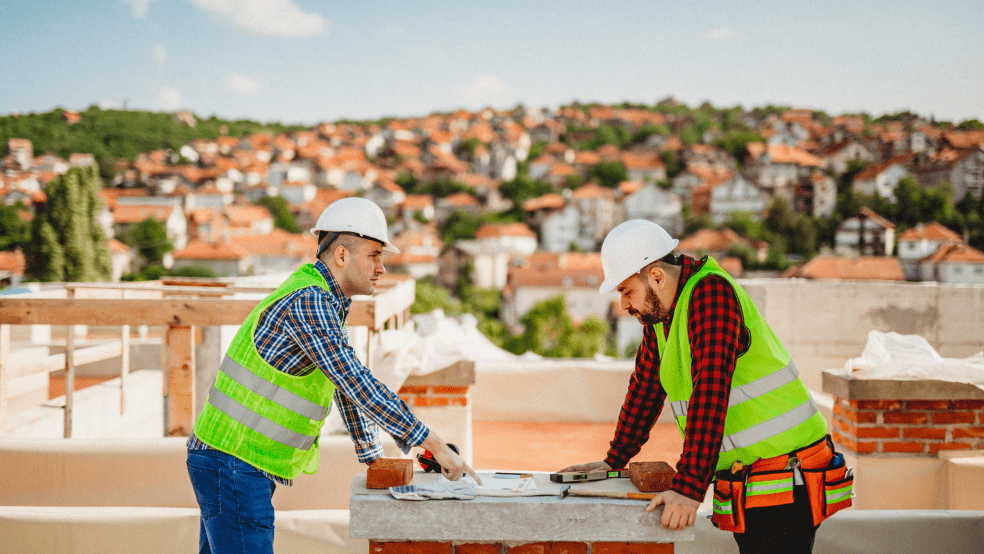Full article with thanks to: ukconstructionblog.co.uk/2018/11/08/approaching-construction-with-an-environmental-mind-2
Construction is a very environmentally intensive process, and when it’s done without the prerequisite oversight, it can lead to serious damage to the surrounding area. This post will explore the ways in which construction companies can improve their best practices to help the environment – ensuring that whatever development they’re building is in harmony with the surrounding environment.
Order the right materials
There’s substantial leeway when it comes to eco-friendly construction materials – you don’t necessarily have to opt for concrete or steel, as there are numerous eco-friendly options out there. As well as being easy to work with and providing superior insulation, timber is considered one of the most sustainable cladding materials. It absorbs carbon dioxide rather than emitting it into the atmosphere and after use, can be recycled or used as a biofuel. However, timber must be sourced from certified forests to mitigate the risk of deforestation. The UK‘s leading importer and distributor of bespoke and sustainable timber, International Timber, consider environmental elements at all business stages. These factors include lowering the embodied carbon of products, minimising waste sent to landfill, and ensuring workers’ social conditions meet internationally recognised standards. Bamboo can be used to build eye-catching structures suitable for warmer climes while blending sawdust and concrete together can create ‘Timbercrete’ – a much more sustainable option utilising a renewable resource. Very few materials can match up to steel’s suitability for high-rise construction, so, if your project requires strong metal, you should opt for recycled steel – which is becoming increasingly prevalent in modern construction, especially in the form of used shipping containers.
Treat your surroundings with care
An environmental construction process requires special attention to be paid to the surrounding flora and fauna – especially if your project is situated in an area of natural beauty. Buildings in national parks, for example, have to adhere to a set of regulations to make sure they don’t detract from the beauty of the area. You can reflect this in the construction process by minimising noise and traffic that might disturb the local wildlife, and by avoiding felling trees and vegetation clearance at all costs. This will lead to a finished product that looks like a natural addition to the area, rather than a scar on the landscape.
Incorporate natural elements
One of the major construction trends of this century involves the incorporation of natural flora into the architecture of the building. Major modern landmarks such as the Scottish Parliament Building in Edinburgh include grass roofs to help insulation in winter, as well as promote an eco-friendly ethos. Such a roof is very easy to fit and requires very little maintenance once put in place. You can also use your building’s ‘transterior’ spaces – such as courtyards, indoor/outdoor foyers and outdoor seating areas to incorporate some plant life to help the project feel at least a little more eco-friendly. A leafy-bordered building will soften the edges, allowing for an accentuated feeling of environmental harmony.
Consider alternative methods
Last but by no means least, approaching construction with an environmental mind should also cover construction techniques themselves. An emerging option amongst new builds is modular construction, in which pre-built modules, assembled offsite, are transported to the site and added to the building. This method drastically reduces water and electricity usage on site, as well as producing a noticeable reduction in traffic, as fewer truckloads of raw materials will be needed onsite. If you’re building in a quiet residential area or in a national park, this method should be considered to reduce the overall impact of your construction project.
A sensible blend of these environmental best practices will lead to your building project gaining a more harmonious relationship with its surrounds and the environment as a whole. As the world leans further towards more eco-friendly practices, it’s well worth putting some of these strategies into action.
Full article with thanks to: ukconstructionblog.co.uk/2018/11/08/approaching-construction-with-an-environmental-mind-2
Did you enjoy that? Why not share this article.
Want to start your career in the construction sector or looking to expand on your construction skills? From our Operator Plant Training to PASMA Courses, we have plenty of training available for you.
Book your construction training with us today.

